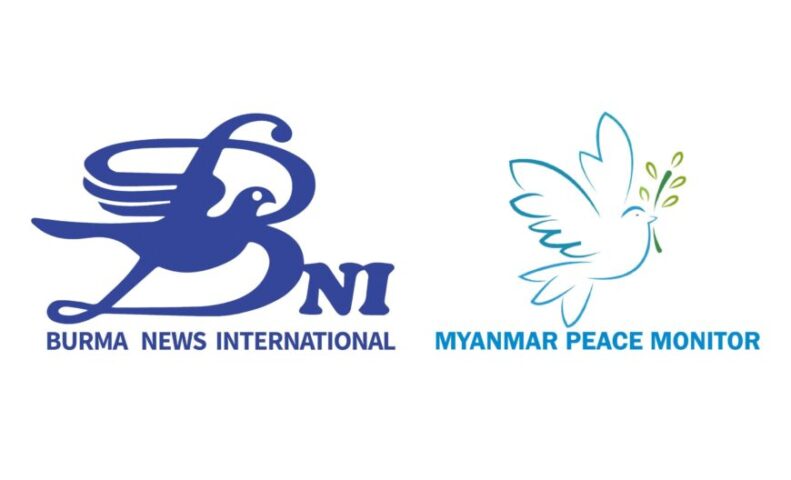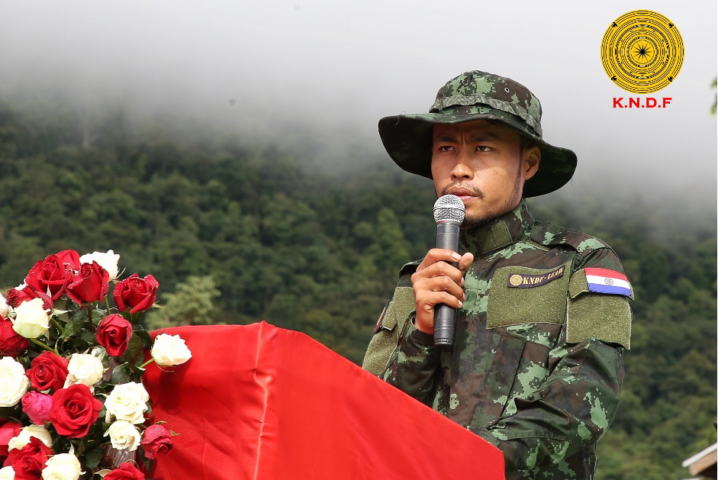An interview with Khu Reedu, military chief of the Karenni Nationalities Defense Force (KNDF)
In this interview with Kantarawaddy Times, Khu Reedu, military chief and secretary-3 of the KNDF talked about the situation on the ground regarding the ongoing armed conflict in Demoso Township in Karenni (Kayah) State and the Pekon-Pinlaung border in southern Shan State, the challenges of resistance forces facing the regime’s airstrikes and other challenges and difficulties they face on the ground.
Q – Can you tell us about the current military situation in Karenni State?
A – In our state, the military council is currently conducting military operations in about three townships – Pinlaung Township near the Shan-Karenni border, Shadaw Township, particularly on the eastern bank of the Salween River near the border, and areas bordering Thailand. They have also penetrated into an area bordering Shan, Karenni and Thailand. Another area is the eastern part of Demoso and Bawlakhe Township.
Q – Can you tell us about the situation in the east of Demoso? We have heard that the military council has started offensives in that area again.
A: They have been advancing into the east of Demoso since March. Since then, we have clashed with them. During the battle for Dawtamagyi, several soldiers from the junta’s light infantry battalions 515, 516 and 12 were killed. They later withdrew from Dawtamagyi and Dawngaykhu. But they started to conduct offensives again. They did so in two areas in eastern Demoso Township. With five battalions, including LIB 516, 515, 80, and IB 12 and 14, they advanced through Bawlakhe to Dawngaykhu and then to Dawtamaghyi.
Q – Can you tell us about the situation in the border areas between Pekon and Pinlaung in southern Shan State?
A – The situation there is similar. The regime’s forces have been conducting offensives with a large number of troops for months. Battalions 247 and 248 of the MOC are there. And battalions 10 and 14 of LID 66 are conducting offensives mainly through the town of Loilenlay. Then there are Battalions 10, 12 and 14 of LID 66 operating in Mobye Township. Seven or eight military columns have been advancing into the Pinlaung area.
Q – Can you give us an update on the casualties on both sides? What about the casualties on the military council side? Because we heard that the commander of the 11th Battalion of the KNDF was killed in the battle for Pinlaung.
A – We have confiscated more than 80 rifles in the east of Demoso alone. Likewise, we have seized more than 50 rifles in the Pekon areas. In the past two years that we have been fighting against the military council troops, most of the guns and ammunition were seized in the last two months. This shows that they’re using a large number of troops. They’re using excessive manpower as well as weapons. When we clashed with them, there were casualties on both sides. In the battles in Pinlaung and Demoso, at least ten fighters fell on the side of the defense forces. When we talk about defense forces, they’re the KNDF, the Karenni Army, and the PDF. We lost at least ten fighters, but in the battle of Dawtamagyi, almost the entire Myanmar Battalion 515 was wiped out. That is the situation on their side. They suffered much more than we did. It’s true that one of our commanders was killed in battle, but it was only because he himself led other comrades into battle. That kind of loss happened because he was actually fighting in the ground battles.
Q – You just said that there were weapons seizures. What types of weapons in particular did you seize?
A – The weapons seized include RPG7, 60mm mortars, long guns, handguns and MA -15. Most of them are MA4, MA2 and MA3. Eight or nine pistols were also seized.
Q – What challenges do the defense forces face in the face of the military council’s intensifying offensives?
A – What we need is enough weapons and ammunition. As the head of AA, Twan Mrat Naing, said, if you’re ‘strong,” they’ll surely serve you porridge when you go to the hospital. So if we have enough weapons and ammunition for the resistance forces in Karenni, I’m sure the military council will have to come and change our altar flowers every morning and evening. That’s the way I’d like to put it.
Q – The junta’s airstrikes have become more frequent recently. In what situation did they resort to airstrikes?
A – These days, airstrikes have become an indispensable part of their military operations. They have resorted to airstrikes in Pinlaung and in our area, Demoso. During the day-long ground battles, they usually use 3 to 4 fighter jets. Not only that, they already have artillery support on the ground. Sometimes we’re surrounded by three or four junta columns. They have also been calling in more air support lately. This shows that they’re losing ground in the ground battles.
Q – The military council has also flown airstrikes in areas where there has been no fighting, damaging or destroying many civilian homes and hospitals. What is your opinion on this?
A – As I said, their administrative mechanisms are no longer functioning properly. Their mechanisms no longer work in Demoso, Hpruso and Bawlakhe because they don’t have the support of the people. And without the support of the people, this revolution just can’t continue either. On the other hand, the military council can’t do anything without this support. We can’t call them a ‘government’ without it. I think they want to destroy the people because they know they can’t win their support in the end. So it’s a warning to the people, “Your houses will be burned down if you continue to participate in the revolution.” I think that’s part of their psychological warfare.
Q – The fighting with the military regime was very fierce during the dry season and still is. Can you tell me about the territorial dominance of the resistance forces?
A – It’s hard to say. It’s hard to say how much territorial dominance there is on either side. Right now, we have to worry more about how long we can maintain territorial control. For example, there are territories that we can possibly take, but what is important is how long we can maintain control after we take them. Right now, all we can say is that we’re fighting with the military council for dominance of the territories. It’s hard for one group to say how much territorial dominance we have now. We can only say that because the situation can change at any time.
Q – How might the military situation in Karenni develop further? And how would you like to encourage your revolutionary comrades?
A – Nobody was forced to take this path. It’s the same with the KNDF, which emerged from the Spring Revolution. No one pushed us to become KNDF soldiers. We have our own history. When we talk about Karenni, we know that it was once an independent state that governed itself. Historically, we’re the masters and hosts of this state. We young people should keep that in mind. We aren’t slaves. We aren’t lackeys who have to work under others. We’re masters. We Karenni must govern our Karenni State. If we look back at history, the Karenni were the rulers of Karenni land. Then we were forced to accept a slave status under foreign rule. At that time, we didn’t sit back. We fought and won battles. What I want to say is that it has been two years now. We have to finish what we started. Otherwise, each of us will leave behind an ugly history. Long before us, there were generations of revolutionaries. Now we have greater strength in terms of manpower, weapons and ammunition. If we continue to fight together for this revolution, we’ll win one victory after another in the future. Our youth should remain persistent in the face of obstacles and challenges. The first steps will be hard, but we’ll be rewarded with happiness and peace in the future. This dream won’t take shape overnight.
Q – How might the military situation develop further in the east of the state, where fighting is escalating?
A – I believe the fighting will continue to intensify. They’ll only increase as long as the junta doesn’t withdraw its troops. The regime has deployed more air and artillery support near the Shan Kayah borders, including Pinlaung. This is because we have opened several fronts there for a long time. The fronts may expand if we continue to march from Pinlaung. They may put more pressure on us because they fear that more forces from other areas may join us. The fighting will certainly intensify. We have no choice but to defend ourselves and go on the counterattack. The fighting will only get more intense.
Sent by Kantarawaddy Times.

